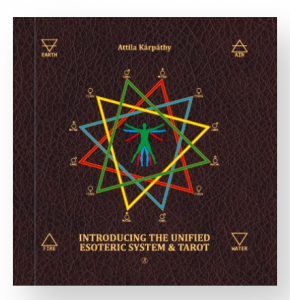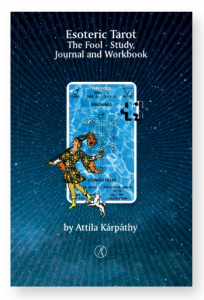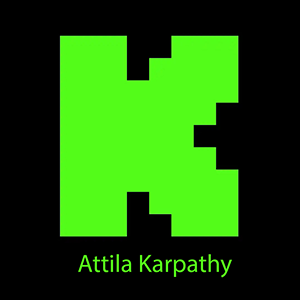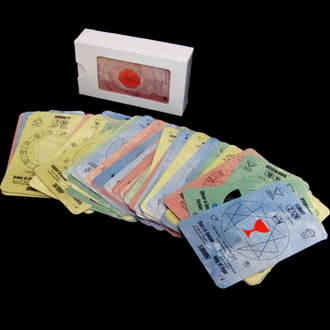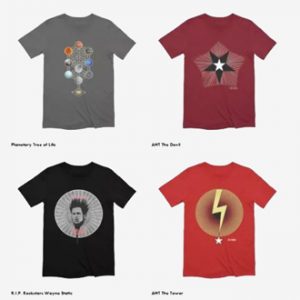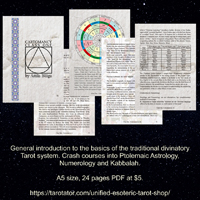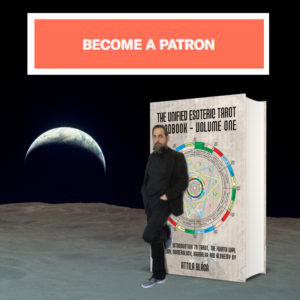The Order of the Golden Dawn was an active occult society in Europe around ninety years ago which attracted some brilliant people. Their tarot deck was illustrated by Wang under instruction from Regardie, and is a work of esoteric importance rather than aesthetic interest.
The Golden Dawn Tarot is an esoteric deck, based on the systems used by the Hermetic Order of the Golden Dawn. Wang worked under the direction of Israel Regardie, with card interpretations based on those developed by S. L. MacGregor Mathers. Read more The Golden Dawn Tarot deck
Yearly Archives: 2015
The Golden Tarot deck by Kat Black
“I started this site in particular to widen the audience for artwork of an under-rated and little-known period. I love late medieval artwork, and I think a lot of other people will too if they just get to see it. Most of these paintings are in European churches, and very few of us will see them in real life. The pictures have been manipulated in order to make them suitable for this tarot deck, but they are based on the real thing.
Most of the images used are from 1300 – 1500AD, a fascinating period both in history and art. The extensive use of gold leaf at this time, as well as experimentation with perspective and use of light and shadow make for some very beautiful pictures. You can see the first beginnings of the Renaissance – striving for reality rather than the stylised representations typical of the earlier medieval period. Read more The Golden Tarot deck by Kat Black
The Dark Grimoire Tarot deck
The Dark Grimoire Tarot takes its inspiration from magical texts of fiction and legend – the Necronomicon and other grimoires. The 78 cards have non-traditional scenes of horror and nightmare. Often strange, they’re also sometimes disturbing, particularly in the literal Hanged Man. Read more The Dark Grimoire Tarot deck
The Giotto Tarot deck by Guido Zibordi Marches
The Giotto Tarot draws its inspiration from Giotto de Bondone, an Italian painter who lived from 1267 to 1337. Giotto is known for moving art in his time away from a stiff formalism based on traditional forms. He encourged the observation of nature and brought a spirit of humanism to his works. The figures in his paintings display an emotional range unusual for the period. The Giotto Tarot is the work of Italian painter Guido Zibordi Marchesi, an expert in Medieval Art. Marchesi recreates Giotto’s style within the context of the tarot. Read more The Giotto Tarot deck by Guido Zibordi Marches
The Enochian Tarot deck
The Enochian Tarot deck is based on the Enochian magickal system, a form of ceremonial magick. The deck has 30 major arcana cards instead of the usual 22.
Enochian is a name often applied to an occult or angelic language recorded in the private journals of John Dee and his colleague Edward Kelley in late 16th-century England. Kelley was a spirit medium who worked with Dee in his magical investigations. The men claimed that the language was revealed to them by the Enochian angels. The language is integral to the practice of Enochian magic.
The language found in Dee and Kelley’s journals encompasses a limited textual corpus, only some of it with English translations. Several linguists, notably Donald Laycock, have studied Enochian, and argue against any extraordinary features in the language. Read more The Enochian Tarot deck
The Estensi Tarot deck
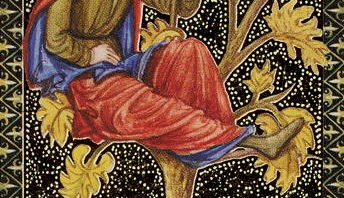
The Golden Tarot of the Renaissance is based on the fifteenth-century French deck, the Charles VI (also known as the Estensi) of which only 17 cards remain. Lo Scarabeo’s full set of 78 cards have been created in attractive watercolours and finished with a gold leaf background. Read more The Estensi Tarot deck
Egyptian Tarot deck by Comte C. de Saint-Germain
The Egyptian Tarot has 78 cards in typical Ancient Egyptian artistic style, line-drawn in brown on a mottled papyrus-like background. Majors have themed titles and Tarot-like scenes, while the minors have decorated pips in suits of Pentacles, Cups, Swords and Sceptres and courts of Slave, Warrior, Mistress and Master. The drawings were produced as illustrations for the 1901 book, Practical Astrology.
Created by Comte C. de Saint-Germain. Read more Egyptian Tarot deck by Comte C. de Saint-Germain
The Cary-Yale Visconti Tarrochi deck
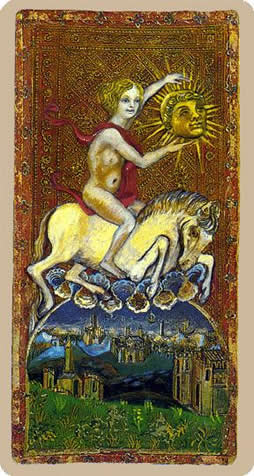
The Cary-Yale Visconti Tarot is a faithful reproduction of an original Italian fifteenth century tarot deck. The deck has the 67 cards that are still in existence in Yale University’s Cary Collection of Playing Cards, plus recreations for 19 missing cards. This Visconti deck is also unusual because it has male and female Knights and Pages in the court cards. Read more The Cary-Yale Visconti Tarrochi deck
Tarot de Marseille
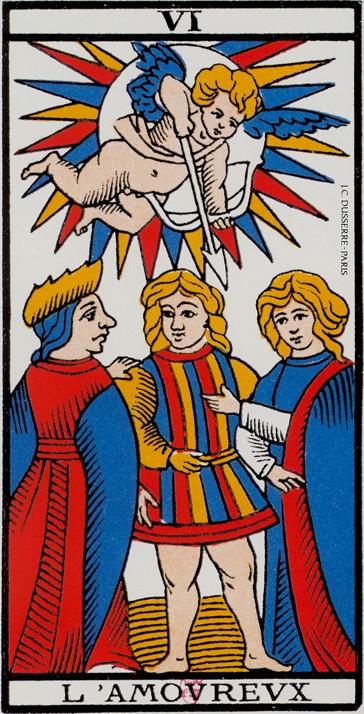
The Tarot of Marseilles or Tarot of Marseille, also widely known by the French designation Tarot de Marseille, is one of the standard patterns for the design of tarot cards. It is a pattern from which many subsequent tarot decks derive.
Michael Dummett’s research led him to conclude that (based on the lack of earlier documentary evidence) the Tarot deck was probably invented in northern Italy in the 15th century and introduced into southern France when the French conquered Milan and the Piedmont in 1499. The antecedents of the Tarot de Marseille would then have been introduced into southern France at around that time. Read more Tarot de Marseille
The 1JJ Swiss deck
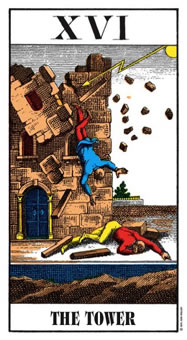
The Swiss 1JJ Tarot deck is a 78-card deck used for the tarot card games Troccas and Troggu and also for divination.
The deck is derived from the Tarot de Besançon which itself comes from the Tarot de Marseille. It is an Italian suited pack which substitutes the figures of Juno and Jupiter in place of the Popess and Pope of the Tarot de Marseille. Read more The 1JJ Swiss deck

